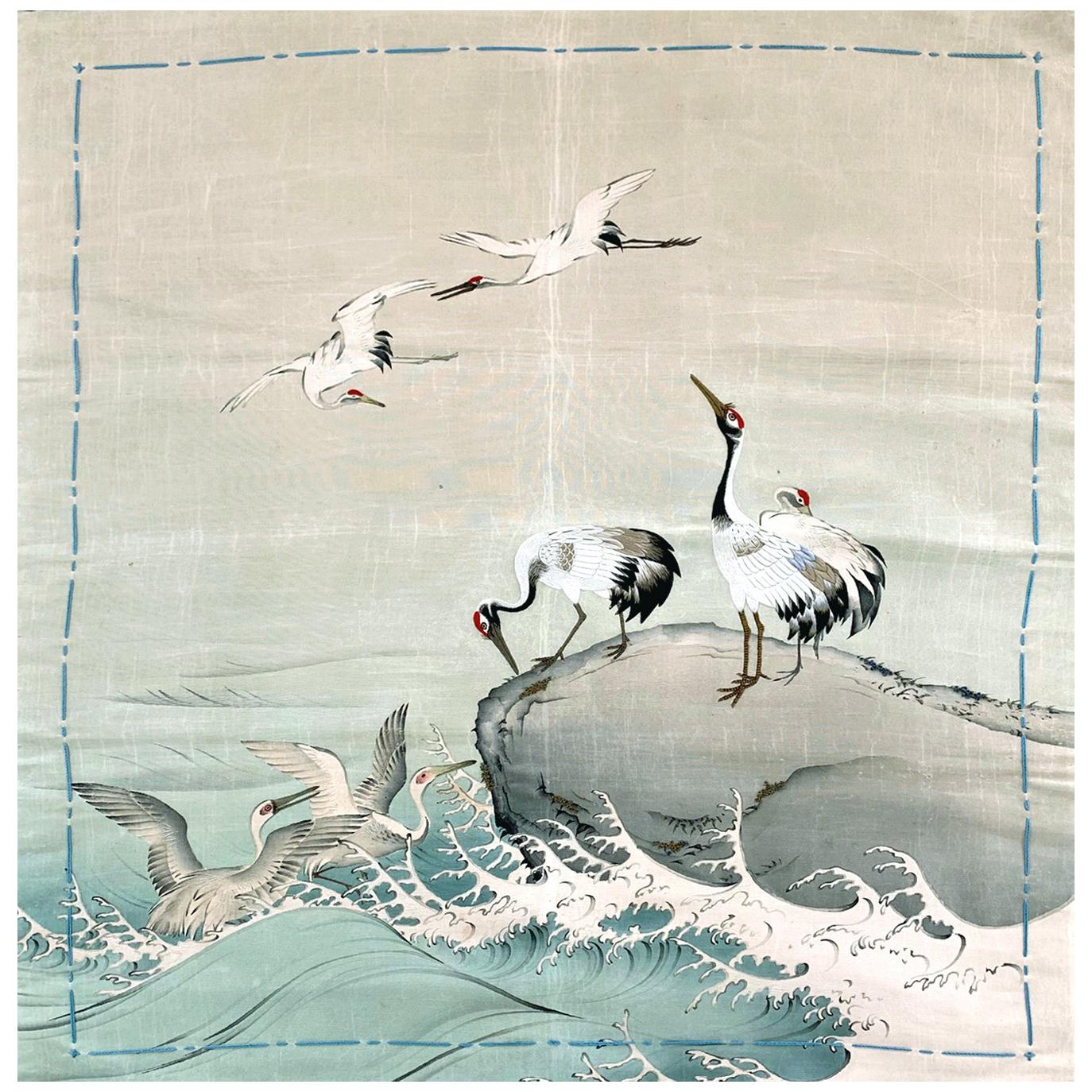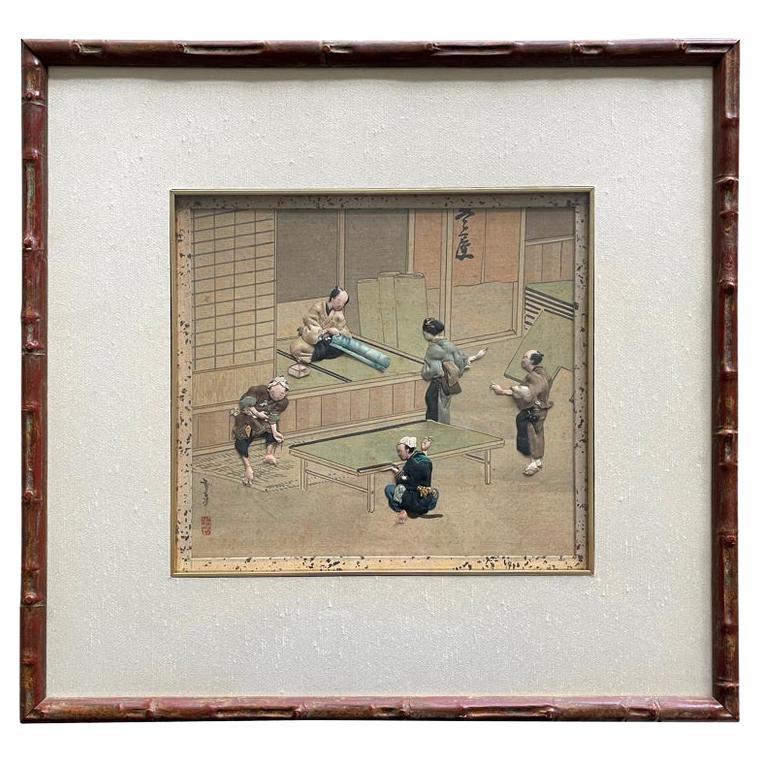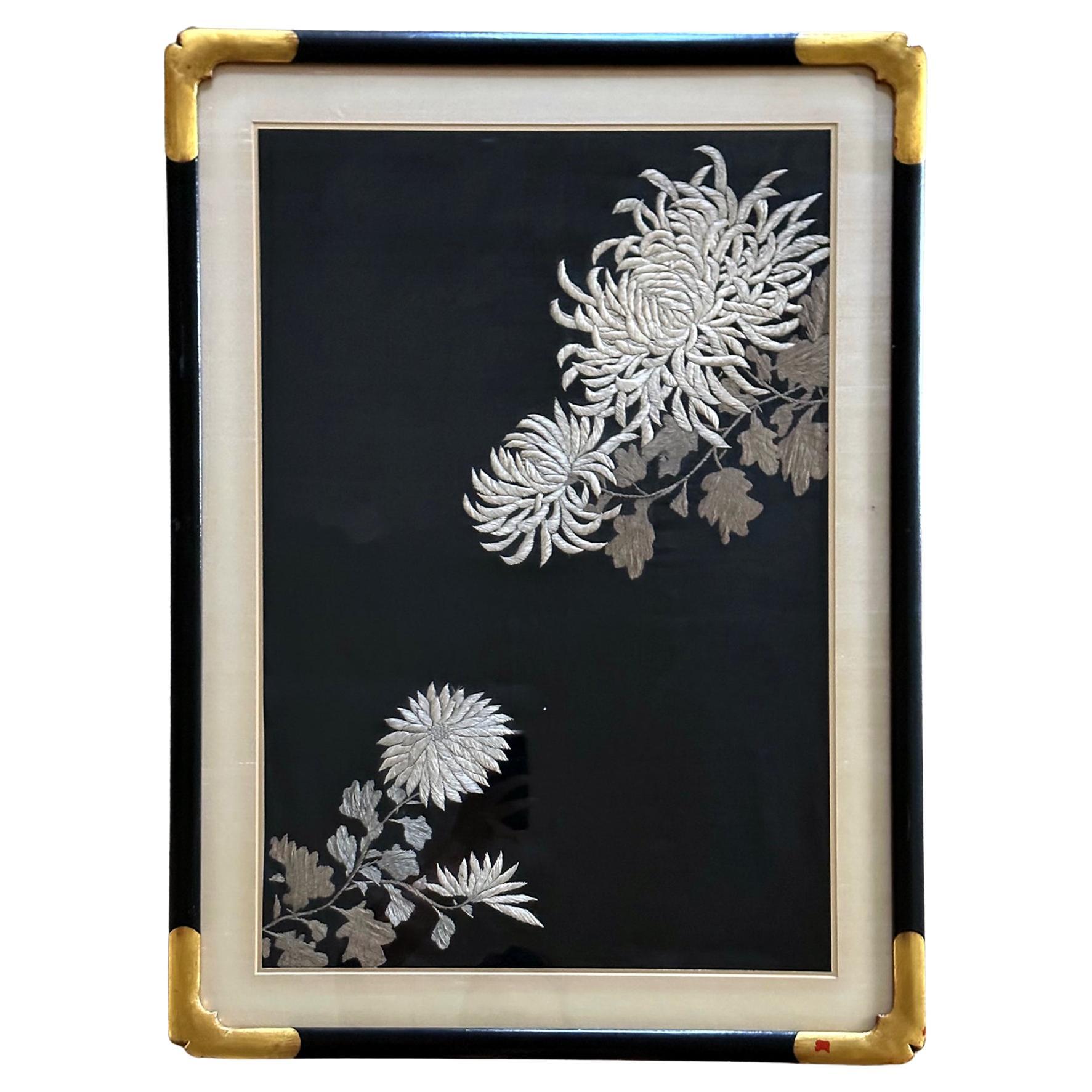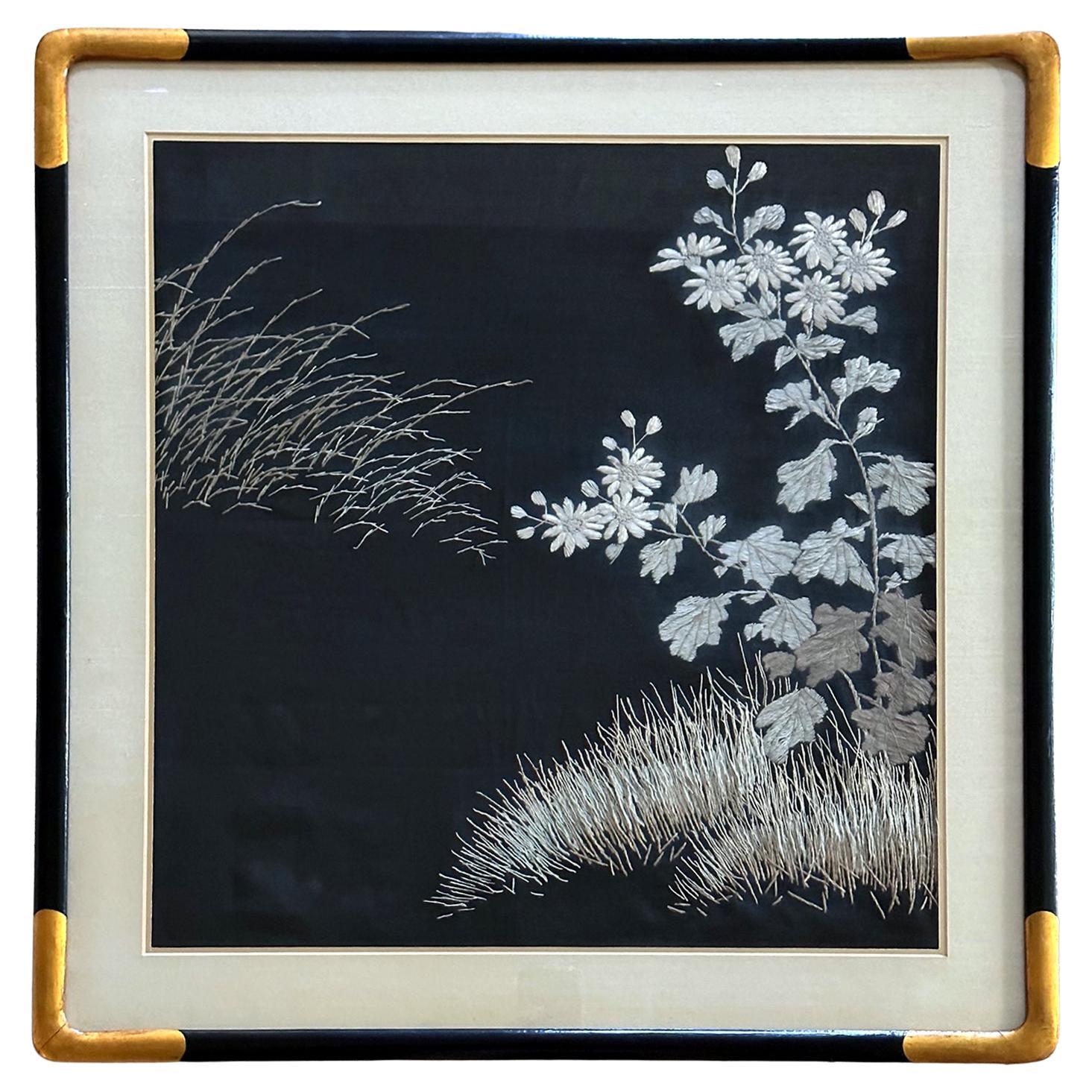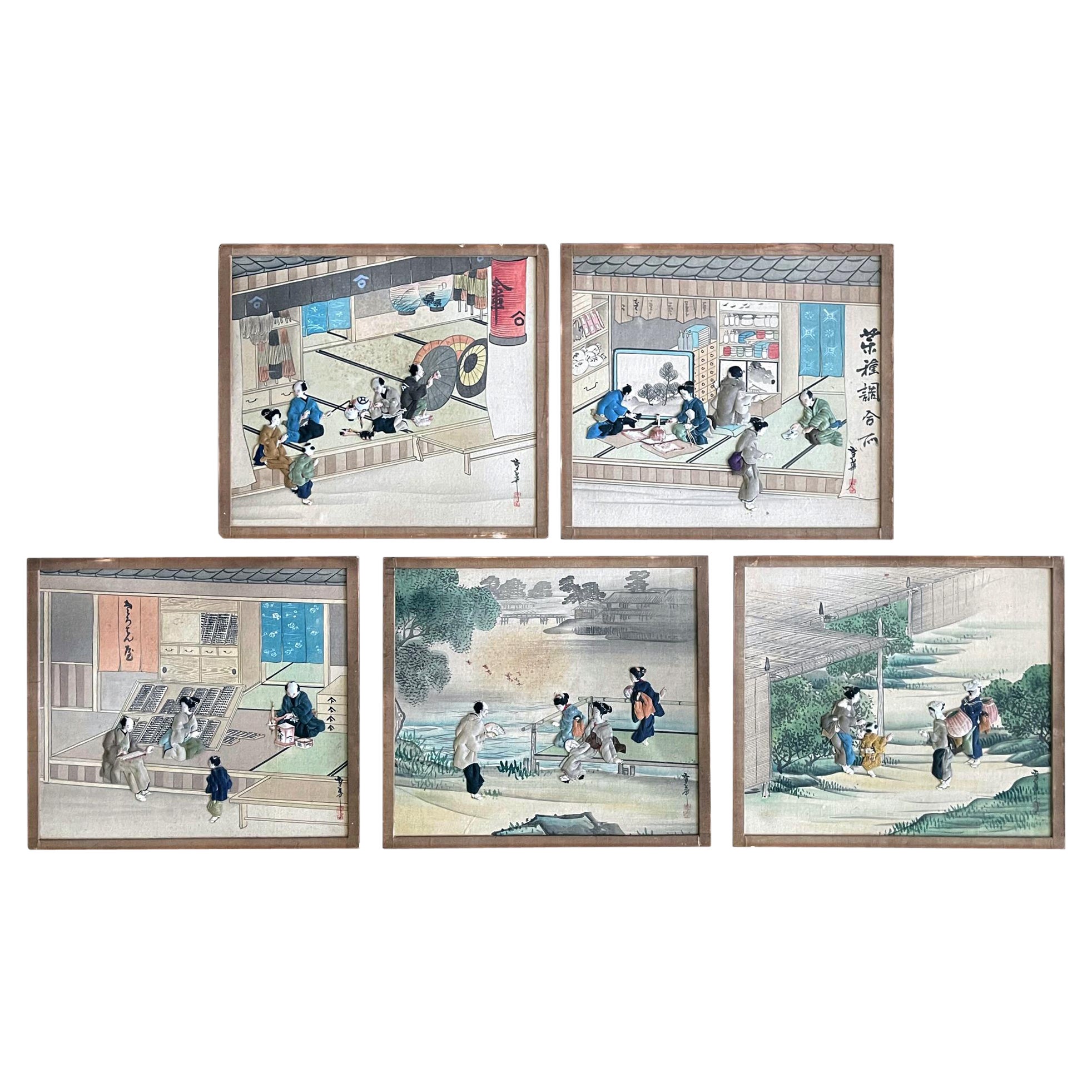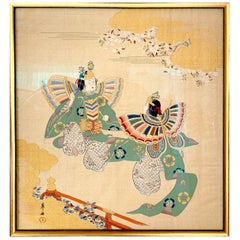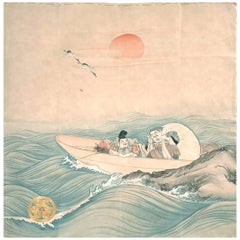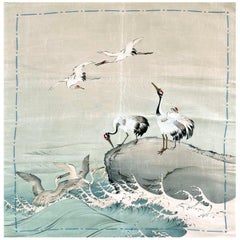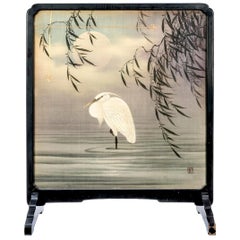
Framed Japanese Textile Art Meiji Period
View Similar Items
Want more images or videos?
Request additional images or videos from the seller
1 of 15
Framed Japanese Textile Art Meiji Period
About the Item
- Dimensions:Height: 27 in (68.58 cm)Width: 23 in (58.42 cm)Depth: 10 in (25.4 cm)
- Style:Japonisme (Of the Period)
- Materials and Techniques:
- Place of Origin:
- Period:
- Date of Manufacture:Late 19th Century
- Condition:Wear consistent with age and use. Textile in fine condition with age wear and small spotting. The frame shows some surface wear. One stand shows significant paint rubbing but we think it is beautiful the way it is as patina. Can repaint upon request.
- Seller Location:Atlanta, GA
- Reference Number:1stDibs: LU945021901702
About the Seller
5.0
Platinum Seller
These expertly vetted sellers are 1stDibs' most experienced sellers and are rated highest by our customers.
Established in 2006
1stDibs seller since 2010
480 sales on 1stDibs
More From This SellerView All
- Framed Japanese Fukusa Textile Art Meiji PeriodLocated in Atlanta, GAA Japanese Fukusa textile panel circa late 19th-early 20th century of Meiji Period. On the woven brocade background with gold thread forming clouds and...Category
Antique Late 19th Century Japanese Japonisme Textiles
MaterialsSilk, Giltwood
- Japanese Antique Fukusa Textile Art Meiji PeriodLocated in Atlanta, GAA Japanese silk Fukusa panel circa late 19th-early 20th century of Meiji Period. The front was beautifully decorated with Yuzen-zome, a labor intensive resist-dye technique invested ...Category
Early 20th Century Japanese Japonisme Textiles
MaterialsSilk, Beads
- Japanese Antique Fusuka Textile Art Meiji PeriodLocated in Atlanta, GAA Japanese silk Fukusa panel circa late 19th-early 20th century of Meiji Period. The front was beautifully decorated with Yuzen-zome, a labor intensive resist-dye technique invested by an artist monk Miyazaki Yuzensai (1654 -1736) of Edo period. The auspicious composition features a group of red-crown cranes, the symbol of longevity. Three of them perch on the rock by the ocean (East Sea) an two of them are in flight. Additionally, two egrets frolic in the wave. Yuzen dying was used extensively to showcase the amazing details such as the waves and the gradual coloring effect. Embroidery was used sparsely to highlight areas such as the legs of the crane to render it more dimensional details. The piece has a red silk backing and still retains four blue tassels on corners as well as decorative stitches along the edges. Fukusa is a traditional Japanese textile...Category
Early 20th Century Japanese Japonisme Textiles
MaterialsBrocade, Silk
- Japanese Antique Fukusa Textile Art Meiji PeriodLocated in Atlanta, GAA Japanese silk Fukusa panel circa late 19th-early 20th century of Meiji Period. The front was beautifully decorated with Yuzen-zome, a labor intensive resist-dye technique invested by an artist monk Miyazaki Yuzensai (1654 -1736) of Edo period. The front cover likely depicts a scene from the Tale of Genji, showing a nobleman and his servant pays a visit to a lady in a fenced thatch-roof house under a high peak. The details of blossom trees and pines, as well as the characters, and scenery with a gradual color are astounding. It is telling that the Yuzen dying was used such an mastery. The piece has a red silk backing and still retains two red tassels on the lower corners as well as decorative stitches along the edges. There is a patched design on the back likely a Mon symbol (family crest). Fukusa is a traditional Japanese textile...Category
Early 20th Century Japanese Japonisme Textiles
MaterialsSilk
- Framed Japanese Oshi-E Textile Art Meiji Period from a Rare Large SetLocated in Atlanta, GAOn offer is the last one of the set of seven framed Japanese textile art called Oshi-E circa Meiji Period (1868-1912). This rare set consists ...Category
Antique 1890s Japanese Japonisme Textiles
MaterialsSilk, Giltwood
- Framed Japanese Embroidery Textile Panel Meiji PeriodLocated in Atlanta, GAA Japanese textile panel with embroidered picture work circa late Meiji period (1900s) presented in a gilt wood frame with silk mat. The work de...Category
Antique Early 1900s Japanese Meiji Textiles
MaterialsSilk, Wood
You May Also Like
- Japanese Asian Framed Meiji Peroid Silk Floral Flower Embroidery Textile PanelLocated in Studio City, CAA beautiful and wonderfully designed/composed Japanese textile panel with embroidery floral natural landscape/flower decoration. The work is pr...Category
Antique 19th Century Japanese Meiji Textiles
MaterialsTextile, Silk, Wood
- Late Meiji Period Sleeping Kimono / Yogi, JapanLocated in Point Richmond, CALate Meiji Period sleeping Kimono / Yogi, Japan Yogi are a type of oversized sleeping kimono traditionally used in Japan. This kimono would have b...Category
Early 20th Century Japanese Tribal Textiles
MaterialsCotton
- Saki-Ori Farmers Coat, Northern Japan, Meiji PeriodLocated in Point Richmond, CASaki-ori farmers coat, Northern Japan, Meiji period A very heavy and substantial saki-ori coat, made of cotton with an indigo kasuri lapel. Several patches of hand sewn stitching ...Category
20th Century Japanese Meiji Textiles
MaterialsCotton
- Meiji Period Japanese Indigo Double Ikat Futon CoverLocated in Point Richmond, CAMeiji period Japanese Indigo double ikat futon cover Japanese futon cover, a double ikat pattern in four panels depicting Kumamoto Castle with im...Category
Antique 1890s Japanese Meiji Textiles
MaterialsCotton
- Japanese Horse Trapping, "Uma-No-Haragake", Tsutsugaki, Cotton, Meiji PeriodLocated in Point Richmond, CAJapanese horse trapping, "Uma-No-Haragake", Tsutsugaki, cotton, Meiji period This type of haragake is called yuiage ("tied up"). The central portion covered the belly of the horse an...Category
20th Century Japanese Meiji Textiles
MaterialsCotton
- Katagami (japanese Stencil), Meiji Era JapanLocated in Saverne, Grand EstKatagami in washi paper, very finely worked. Japan, early 20th century. The sheets of paper making up Japanese stencils are made from mulberry bark. They are stuck together with fer...Category
Early 20th Century Japanese Meiji Textiles
MaterialsPaper
Recently Viewed
View AllMore Ways To Browse
19th Century Japanese Silk Embroidery
Antique Japanese Silk Prints
Antique Japanese Embroidery Art
Japanese 19th Century Meiji Period Silk Painting
Japanese Screen Moon
Antique Japanese Silk Embroidery
Shallow Couch
Shallow Sofa
Asian Water Color Painting
Asian Water Colour Paintings
Antique Painted Fireplace Screen
Antique Wood Fireplace Screen
Weeping Gold
Color Shift Panel
Antique Hand Painted Fireplace Screen
19th Century Japanese Embroidery
Japanese Embroidery Framed
Motion Sofas


